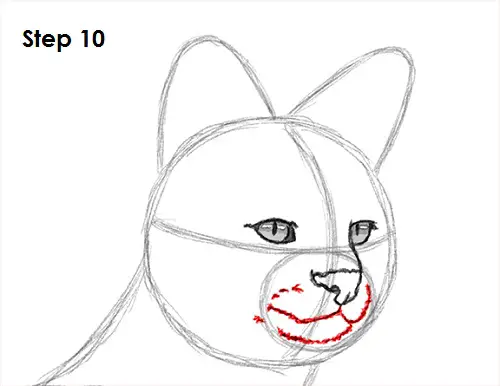
Step 10: Use the small circle as a guide to draw the rest of the serval's muzzle. Draw a line under the nose that splits into two and curves up for the mouth. Draw the chin under the mouth, and use quick, short strokes to get a fuzzy look. Add some lines on the left for the side of the muzzle.
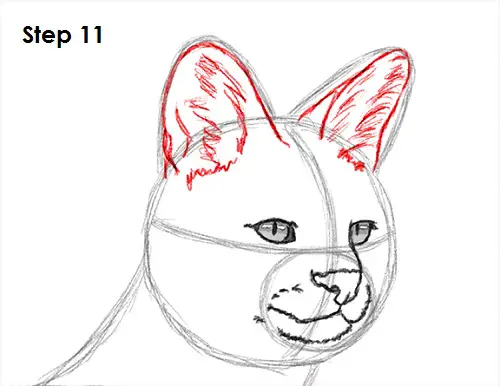
Step 11: Use the arcs on the head as guides to draw the serval's ears. Darken the guides to create the other shape of the ears and add some lines inside for the inner structure. Add a few quick, short strokes inside the shapes for the fur within the ears.
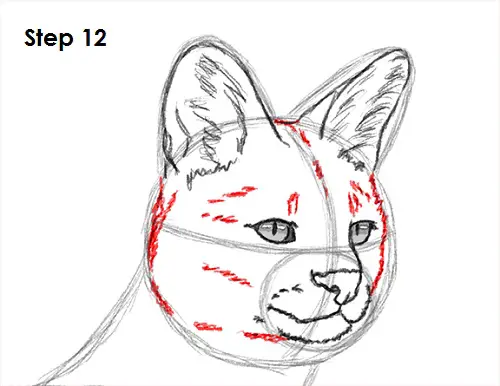
Step 12: Use the original circle as a guide to draw the rest of the serval's head. Follow the basic path of the circle as you create the head but use quick, short strokes for a furry texture. Add a few quick, short strokes within the head too for extra detail. The line for the face on the right should be closer to the eye than the original circle.
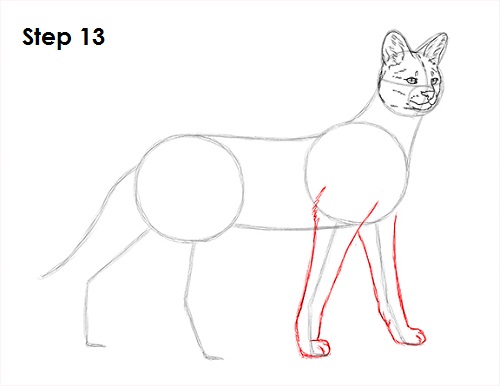
Step 13: Use the lines on the right side as guides to draw the serval's front legs. Lightly sketch the shape of the leg as you follow the basic path of the line. When you get the structure of the leg right, darken the lines. Add a few curved lines at the bottom to create the toes. Use the other line to draw the front leg on the other side the same way. Follow the path of the guide as you sketch the shape lightly and only darken the lines when you get the structure right. Add the toes at the bottom by using a couple of curved lines. Bend the shape of the legs near the bottom to indicate the joints.
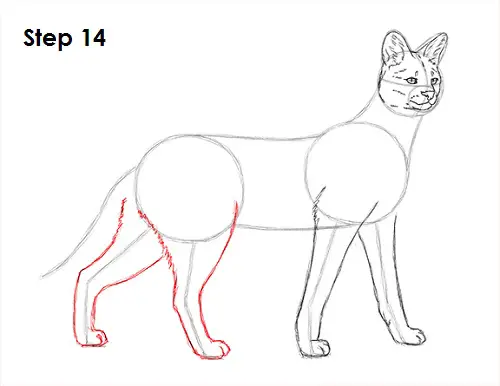
Step 14: Now use the lines on the left as guides to draw the hind legs using the same technique. The shape of the hind leg should bend more than the front legs. The top part of the hind leg should also be a lot wider than the front leg, and don't forget the toes on the bottom. The serval is stepping forward, so the hind leg on the other side will have the biggest bend in the joint. Darken the lines only once you have the structure of the leg right and use the curved lines for the toes at the bottom.







